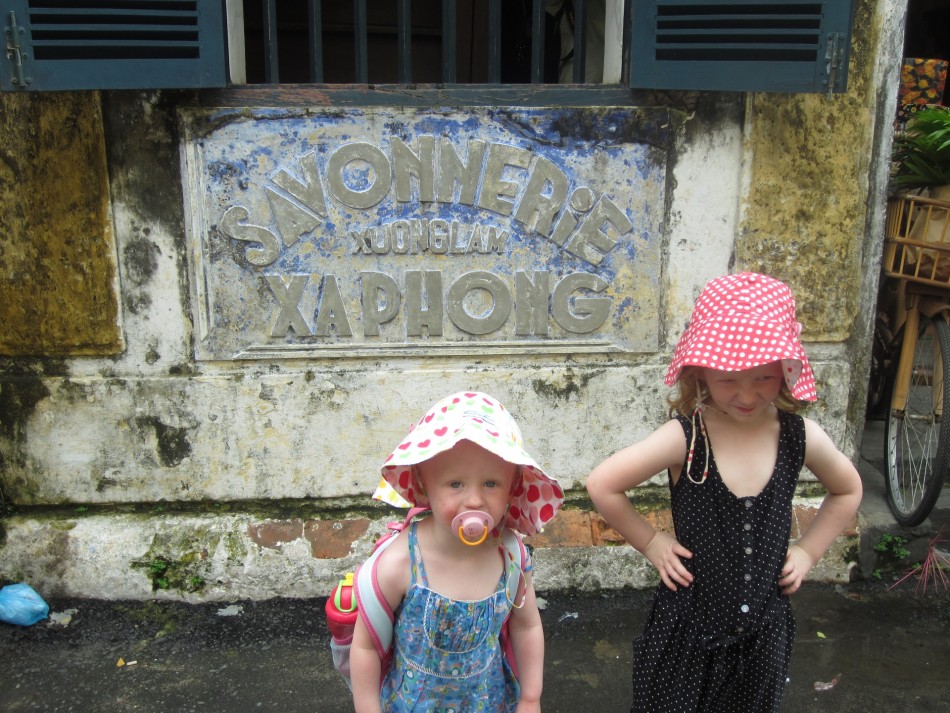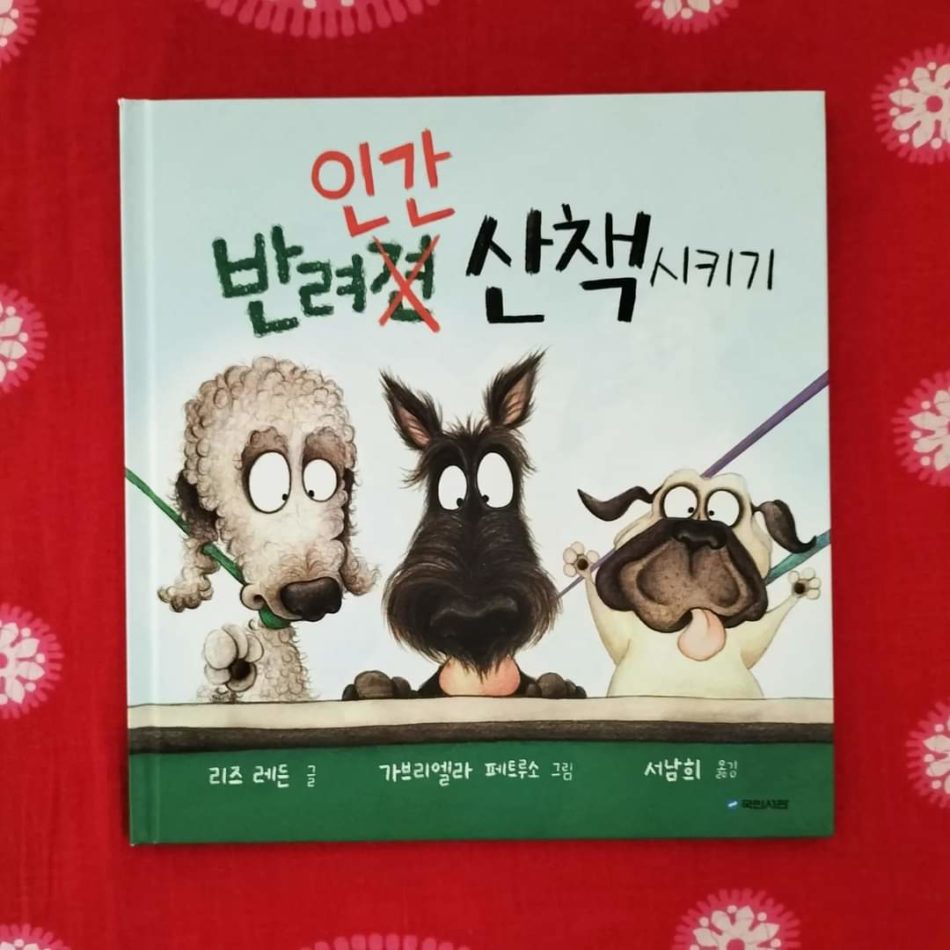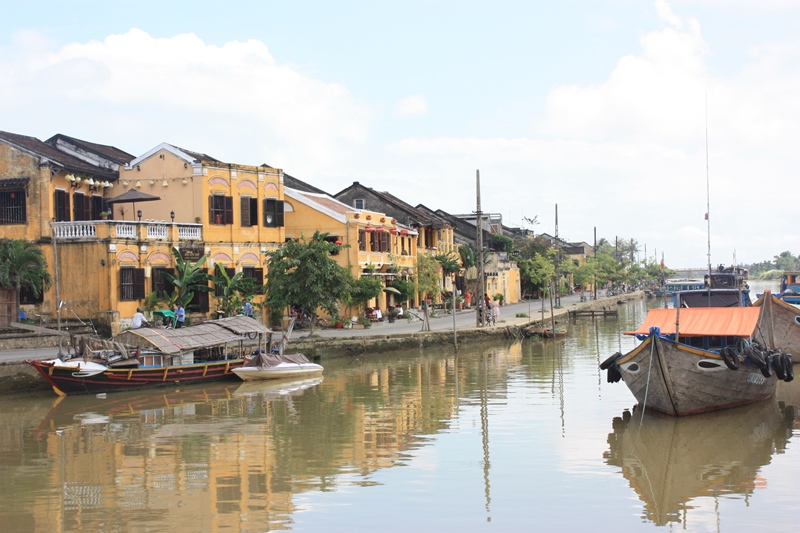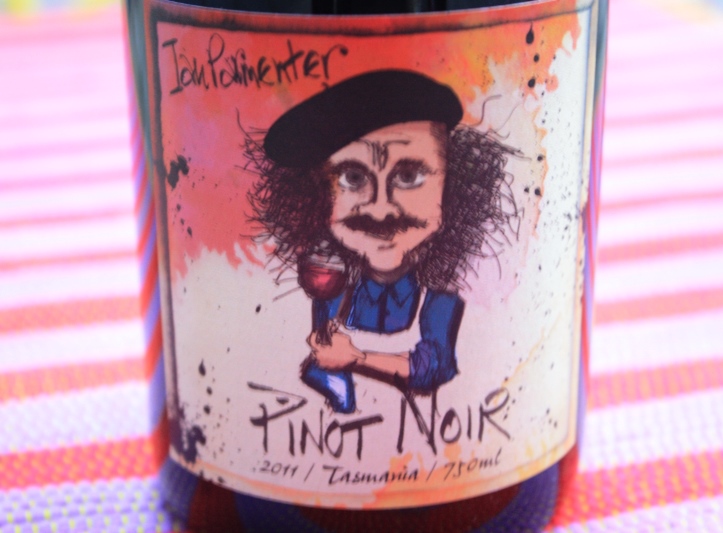
In the next few weeks my current bout of travel anticipation will culminate in several trips – a roadtrip to Mudgee (NSW wine country), then a couple of weeks in my old home (and ongoing obsession!) Southeast Asia, with time in Bangkok, Koh Chang and Kuala Lumpur.
On these holidays, our kids will be 3 and 5. I have a feeling (fingers crossed) it will be slightly easier this time than last time, and the time before that and the time before that… after all, they’re older and therefore should be easier, right?!! Here’s hoping, but in the meantime I thought I’d look back at some previous trips and compare the pros and cons of travelling with kids at different (young) ages.
Less than 6 months
Positives:
– They sleep alot during the day – this allows you to explore and eat out relatively easily. We had a surprisingly successful weekend in Singapore when our first was four months old – she spent alot of time in the day asleep in the stroller and we had a lot of opportunity to wander the Arab Quarter, Chinatown and Little India. It was easier then than it would have been a few short months later.
– They don’t need things sterilised if they’re breastfeeding exclusively and aren’t onto solids yet. Travel with a baby is much more simple before they move onto formula and food.
– They’re portable – they’re small enough be strapped into a Baby Bjorn rather than be carted around in a stroller, which makes things a bit freer and easier, especially in less developed places where strollers are harder to manoeuvre.
Negatives
– Sleep deprivation – with a newborn waking all night long, it makes it harder to relax and appreciate your surrounds (or be fully focussed on much during the day).
– The baby’s sleep routine (if you have one) can be disturbed by getting in and out of different modes of transport all the time.
– They are at their most fragile, and susceptible to the heat and illness.
– They require frequent breastfeeding which isn’t always convenient, especially if you’re out and about in a heaving, hot and humid Asian city.
Between 6 months and 2 years
Positives
– Attention and help – at this age, kids are past the super fragile stage and are a bit more playful and smiley, so we found this was the time of receiving the most attention, hugs and whisking away by staff at cafes and restaurants. All our travel then was in Southeast Asia (where we were also living) so it might not be the case everywhere!
– Curiosity and learning – this was a time our kids explored and learnt alot, from roaming around temple grounds to sampling lots of different foods, like developing an appreciation for pho and snacking on dried river weed in Laos (mmm, green chips!). With all the curiosity came a relentless need to run around and a total inability to sit still anywhere, so this one hovers between being a positive for them and a negative for the parents!
Negatives
– This was the most intensive time in terms of sourcing milk and food, sterilising things, and needing ridiculous amounts of equipment. Between 6 months and one we had to source pureed food from restaurants and hotels, mostly in Vietnam. We would sometimes end up with strange, salty soups people would concoct for us, which was well meaning but sometimes not quite right. We found the best thing to do was to request boiled or steamed vegetables like carrots, then mash them up ourselves. Once they moved onto slightly more solid food, all things carbs became a godsend. Think baguettes and bowls of rice.
– They’re not quite old enough to appreciate things – this isn’t their fault of course(!) but sometimes we had travel experiences where we wished our kids were slightly older and able to enjoy certain things more. One example was a beach holiday in Khao Lak, near Phuket in Thailand, with our first when she was about 20 months old. We stayed at a huge resort with different pools and even waterslides, but she was a bit scared of the slides and favoured the smallest pool. We would love to be back in the same place now with our kids at 5 and 3, as we know they would absolutely love it. Another was when we were at an elephant park in Chiang Mai, when our oldest was 3 – we thought she’d be more excited, but she seemed a bit blase about the elephants and more focussed on the biscuits she was eating. Again, something that would’ve been better a year or two down the track.
Two kids: aged 1 and 3
When our kids were one and three, we’d not long moved back to Australia but were craving a return to Southeast Asia for a holiday (this may happen forever!). We ventured to Bangkok, Chiang Mai, Phnom Penh and Singapore, and in hindsight realise this was a bit too ambitious with such young kids. We’d just be settled in one place then we’d be moving onto the next, when it would’ve been better to stay put in one place for the majority of the time. At these ages, I’d recommend a one-destination kind of holiday.
Positives
– Car hire! One of the best things we did was hire our own car in Chiang Mai, complete with a car seat for the one year old. We drove outside town to the zoo, to the hilltop temple Doi Suthep and out into the Thai countryside. It was easier having the kids secured in the car than holding onto them in a tuk tuk or taxi, and they managed to sleep while we drove and explored.
Negatives
– Too much travelling takes its toll. At this age, we should’ve taken the kids to one place rather than packed a lot in, but although it was a difficult trip we still don’t regret it!
– Kids just want a swimming pool – we made the mistake of choosing a small, boutiquey kind of backpackery guesthouse in Chiang Mai, which was in a great location but didn’t have a pool, which we thought didn’t matter. It did. We ended up checking out and having a few days in the super luxurious Shangri-La, complete with ginormous swimming pool. The kids were so much happier! Talk about high standards….
– Heat, dehydration and food and water hygiene are all still important issues at this age. Our kids came down with a bug in Phnom Penh which saw our one year old so dehydrated she was hospitalised for a few days once we reached Bangkok. Which sounds really dramatic but basically consisted of being hooked up to a drip and fed lots of rice porridge until back to normal again – after a few days she was good as new and we continued with the holiday. In the meantime, we took it in turns taking the three year old out and about and hanging out with friends who live in the city, which was really enjoyable. A positive is that the hospital situation in Bangkok for such incidents is really good – we actually ended up back in the same hospital both of our kids were born in, so it was a bit nostalgia-tinged!
Two kids: aged 2 and 4
This time last year our kids were aged two and four, and we took them to Vietnam for a few days in Saigon and a longer stint in Hoi An. We managed to mix beach time with lots of food, exploring and culture in Hoi An’s beautifully preserved Old Town, and overall this was a far more successful trip than the previous one.
Positives:
– Our youngest was far more independent and able to run around and explore alot more than on previous trips, while our four year old was far more outwardly focussed and observant of the world around her. She noticed alot more, asked lots of questions, was more interactive with people and got much more out of travelling than when she was three. The difference between three and four was huge!
– The kids could play with each other alot more. The previous year, our youngest was essentially still a baby, but this time she could play with her sister on the beach and in the pool.
Negatives:
– The last days of nappies and strollers – we still had a bit of ‘baby’ equipment to lug around.
– Tiredness – the youngest still needed a day sleep and sometimes even fell asleep while out at an early dinner.
For our upcoming trips with our now 3 and 5 year old kids, I am anticipating the following:
Positives:
– No more baby equipment (yay!). This will be our first family holiday without lugging a stroller around, and with no-one in nappies (or even swimming nappies). Our youngest is out of a cot too, so no need to organise for our hotel rooms to have cots either. On Koh Chang, we are staying in a bungalow with two double beds so the kids have their own. There’s been a lot of bed sharing in the last few years on our family trips, so this sounds like a pretty good setup!
– Screentime on the plane – this time last year, our then two year old had zero interest in anything screen-related on a plane ride from Sydney to Vietnam. Which meant I had to think of other ways to entertain her the entire way. Did I mention I was flying alone with the kids on this trip (we met my husband there as he was already over there for work)? Fun times! At three, our youngest has changed immensely and actually has a concentration span. This time around, the kids will hopefully watch lots of movies and TV shows!
Negatives:
– Potentially carrying the kids around alot – although I’m excited about finally travelling pramless, it is inevitable we’ll end up having to carry the kids around when they get tired. Not so much at the beach, but in the cities where we’ll no doubt end up walking long distances.
– The kids are now old enough to fight with each other(!)
As for the rest, we’ll have to wait and see, but I’m hoping it’ll be our most successful trip yet. I keep hearing how between 6 and 12 are the ‘golden years’ of family travel. Only a few more years and we’re there!
Do you have any family travel tips for different ages? Or an age range you’ve found the easiest for travel? Please share!












